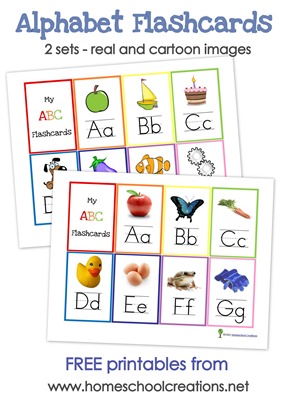Last year I was SO very excited to share the Omnibus bundle with you all and this year, you will NOT be disappointed! The Omnibus is PACKED with even more goodies to give you more bargain for your money.
For the next FIVE DAYS ONLY, from August 20th – 25th, you can download over 90 ebooks for just $25. Purchased separately, these ebooks and curriculum packs are valued at over $350 ~ are you seeing the savings? This bundle works out to about 30 cents for each ebook!
The Weekly Homeschool Planner {normally $20} is included in the Omnibus and I am so excited to share this with you!! Read below to find out more about the bundle and what is included!
What is the Homeschool eBook Omnibus?
Simply put – it’s a fabulous collection of over 90 ebooks from homeschool authors with a little bit of everything: curriculum, helps for mom, homeschool planners, and SO much more!
How long will the Omnibus sale last?
The sale will begin at 12:01am ET on Tuesday, August 20th and end at midnight on Saturday, August 24th.
What eBooks are included in the Homeschool Omnibus?
-
101 Ways to Make Spelling Fun: written by Tamara Chilver from Teaching with TLC
-
1st Grade Summer Learning RRR: written by Beth Gorden from 123 Homeschool 4 Me
-
2012 Worksheet Packet: written by Lauren Hill from Mama’s Learning Corner
-
31 Days to Build a Better Spouse: written by Ashley Pichea from Life by Ashley Pichea
-
4 Easy Steps to Homeschooling Success: written by Kirsten Joy Torrado from Kirsten Joy Awake
-
51 Frugal Father-Daughter Date Ideas: written by Ashley Pichea from Life by Ashley Pichea
-
Animal ABCs: written by Carisa Hinson from 1+1+1=1
-
Art for All Ages: Chalk Pastels Through the Seasons: written by Tricia Hodges from Hodgepodge
-
The Art of Strewing: written by Aadel Bussinger from These Temporary Tents
-
Blog at Home Mom: written by Christin Slade from Joyful Mothering
-
Boyschooling: written by Jamerrill Stewart from Free Homeschool Deals
-
Called Home: Finding Joy in Letting God Lead Your Homeschool: written by Karen DeBeus from Simply Living…for Him
-
Cerebration Concentration: 50 Ways to Develop Concentration: written by Marianne Vanderkolk from Design Your Homeschool
-
Children’s Bible Book Set: written by Janine LaTulipe from Blue Manor Academy
-
Christian Kids Explore Science Experiment Sampler : written by Maureen Spell and Bright Ideas Press
-
Complete: written by Arabah Joy from Arabah Joy
-
Comprehensive Homeschool Unit Study Planner: written by Tina Robertson from Tina’s Dynamic Homeschool Plus
-
Copywork for McGuffey’s First Reader: written by Amy Maze from Classical Copywork
-
Copywork Lessons for Future Heroes: written by Ami Brainerd from Walking by the Way
-
Coupon Quick Start Guide: The Easiest and Fastest Way to Serious Savings and Free Groceries: written by Angela Newsom from Coupon Makeover
-
Create Your Own Penmanship Pages – Pentime Manuscript Font: written by Sheri Graham from Sheri Graham
-
Degas and Prokofiev Mini-Unit: written by Barbara McCoy from Harmony Fine Arts
-
Designing Your Language Arts Curriculum: written by Jimmie Lanley from Jimmie’s Collage
-
The Dig for Kids: written by Patrick and Ruth Schwenk from The Better Mom
-
Discover Africa!: written by Jessica from Balancing Everything
-
Dyslexia 101: Truths, Myths and What Really Works: written by Marianne Sunderland from Abundant Life
-
Early Elementary Fractions: written by A+ Interactive Math from A+ Interactive Math
-
Easy Oven-Free Dinners: written by Tabitha Philen from Meet Penny
-
Easy Peasy Penmanship: written by Diane Hurst from Gentle Shepherd
-
Encompass Preschool Curriculum: written by Kathy Gossen from Cornerstone Confessions
-
Energy Explosion: A 7 Day Guide to Jump Start Your Energy: written by Arabah Joy from Arabah Joy
-
Essay Tune Up: written by Jimmie Lanley from Jimmie’s Collage
-
Family Homeschool Planner: written by Patricia Espinoza from Raising a Self-Reliant Child
-
Finding Joy in Depression: written by Amanda Pelser from The Pelsers
-
Finding Your Vision: Beginning (or Continuing) Your Homeschool Journey With the End in Mind: written by Connie Stults from the daisyhead
-
God Said So: written by Alisha Gratehouse from Flourish
-
God’s Little Explorers Preschool Curriculum: written by Stacie Nelson from Motherhood on a Dime
-
God’s Word in My Heart: A Scripture Learning Guide with Memory Verses: written by Jenn Thorson from The Purposeful Mom
-
The Homemaker’s Guide to Creating the Perfect Schedule: written by Amy Roberts from Raising Arrows
-
Homeschooling 101: written by Erica from Confessions of a Homeschooler
-
Homeschooling 101: written by Kris Bales from Weird, Unsocialized Homeschoolers
-
Homeschooling by the Numbers: written by Angie Kauffman from The Homeschool Classroom
-
Christian Homeschooling With Netflix, Amazon, & More : written by Angela Newsom from Cross and Quill Media
-
How the 8 Types of Learners Approach New Concepts: written by Jen Lilienstein from Kidzmet
-
Illustrated Keepsake Alphabet Dictionary: written by Jennifer from Mama Jenn
-
Kick Your Fears To The Curb! 10 Motivating Tips To Help You Overcome Homeschooling Fears: written by Demetria Zinga from Christian Homeschool Moms
-
Language Arts Lessons with Aesop’s Fables: The Town Mouse and the Country Mouse: written by Marianne Vanderkolk from Design Your Homeschool
-
Lapbooking Made Simple : written by Heidi St. John from The Busy Mom
-
Learning for the "Littles" – A Preschool Notebook: written by Sheri Graham from Sheri Graham
-
Learning is Fun! Literacy and Math Pack – 10 Centers for Back to School, All Year: written by Sallie Borrink from Sallie Borrink
-
Letter of the Week: written by Erica from Confessions of a Homeschooler
-
Literature Study Guide & Lapbook: Frog and Toad are Friends: written by Beth Gorden from 123 Homeschool 4 Me
-
Literature Study Guide & Lapbook: The Door in the Wall: written by Beth Gorden from 123 Homeschool 4 Me
-
Love Your Mayhem: written by Amy Landisman from Adorable Chaos
-
Menu Planner: written by Marianne Vanderkolk from Design Your Homeschool
-
Nature Study Printables for Toddlers and Preschoolers: written by Maureen Spell from SpellOutloud
-
Notebooking Success: written by Jimmie Lanley from The Notebooking Fairy
-
Our Family Vision Statement : Your How To Homeschool Guide: written by Marianne Vanderkolk from Design Your Homeschool
-
Outdoor Hour Challenge – Autumn Nature Study Ebook: written by Barbara McCoy from Handbook of Nature Study
-
Overwhelmed: Hope and Help for the Financially Weary: written by Richele McFarlin from OverwhelmedBook
-
Plan Your Own Home School Curriculum: written by Dr. Marie-Claire Moreau from Quick Start Homeschool
-
Poetry Guide: written by Valerie McClintick from The Crafty Classroom
-
Poetry Lesson : written by WriteShop
-
Prayer Cards: written by Kim Sorgius from Not Consumed
-
Praying Proverbs 31: prayers for a daughter’s virtue: written by Tracy Glockle from Growing In Grace
-
The Preschool Journey: written by Angela Thayer from Teaching Mama
-
Preschoolers and Peace: Homeschooling Older Kids With Success While Loving the Little Ones at Your Feet: written by Kendra Fletcher from Preschoolers and Peace
-
Princess Training: for the King’s glory: written by Richele McFarlin from Under the Golden Apple Tree
-
Recordkeeping for Unschoolers: written by Sara McGrath from Unschooling Lifestyle
-
The Relaxed Art of Eclectic Homeschooling : written by Amber Oliver from Classic Housewife
-
Return of the Routine: Six Simple Steps to Success: written by Tricia Hodges from Hodgepodge
-
Science for Smart Kids: Electricity and Magnetism: written by Colleen Kessler from Raising Lifelong Learners
-
Sensory Bins: The What, The How & The Why: written by Sharla Kostelyk from The Chaos and The Clutter
-
Shield: A Framework of Self-Care for Foster & Adoptive Families: written by Sharla Kostelyk from The Chaos and The Clutter
-
Simply Homeschool: Having Less Clutter and More Joy in Your Homeschool: written by Karen DeBeus from Simply Living…for Him
-
Southern Hodgepodge cookbook bundle: written by Tricia Hodges from Hodgepodge
-
Spectacular Spiders: written by Cindy West from Our Journey Westward
-
The Story of Abraham Lincoln : written by Heritage History from Heritage History
-
SQUILT Volume 1: Baroque Composers: written by Mary Prather from Homegrown Learners
-
Steady Days: A Journey Toward Intentional, Professional Motherhood: written by Jamie Martin from Simple Homeschool
-
Think Outside the Classroom: A Practical Approach to Relaxed Homeschooling: written by Kelly Crawford from Generation Cedar
-
Tiger Hunt!: written by Christy Halsell from One Fun Mom
-
Van Gogh and Handel Mini-Unit: written by Barbara McCoy from Harmony Fine Arts
-
Vermeer and Haydn Mini-Unit: written by Barbara McCoy from Harmony Fine Arts
-
Weekly Homeschool Planner: written by Jolanthe from Homeschool Creations
-
Write Through the Bible: Philippians 2:1-18 (Cursive, ESV): written by Trisha Gilkerson from Intoxicated on Life
-
Write Through the Bible: Philippians 2:1-18 (Manuscript, ESV): written by Trisha Gilkerson from Intoxicated on Life
-
You Can Do It Too – 25 Homeschool Families Share Their Stories: written by Lorilee Lippincott from Loving Simple Living
-
You Can Read Bundle: written by Carisa Hinson from 1+1+1=1
Additional Resources: Codes and Links Provided After Purchase of Omnibus
-
From Fortuigence: Get kids ready for writing! Grab access to a short online course that supports you in setting a powerful setting for your kids to become strong writers. A $79 value — yours free!
-
From A Plan in Place: 10% off entire order.
-
The Story of Abraham Lincoln : written by Heritage History from Heritage History
-
From WriteShop: 15% off storewide.
-
From A+ TutorSoft: 20% off your entire order.
-
Also from A+ TutorSoft: download a free ($21.99 value) math supplement that helps to build a strong foundation and close learning gaps for struggling students.
-
From Bright Ideas Press: Free media shipping with an order of $30 or more.
-
From Real Life Press: 15% off entire purchase in the store.
-
From Shining Dawn Books: Get 30% off ANY order through the end of August, 2013.
-
From Kirsten Joy Awake: Download a free copy of Bible Writer: Volume 1, an all in one Bible Memory and Copywork curriculum.
Why are you selling this collection so cheap?
The authors are all homeschool moms like you who want to bless you all and give back in some way to the homeschool community. We know how much curriculum and school supplies cost – so this is a super deal!
Is there any other information I need to know before purchasing?
If you have questions regarding downloading, or any other problems, contact the iHomeschool Network. They are handling the details of the sale. Find the FAQ and Contact information here on their website.
























 Kathy Kuhl, the author of
Kathy Kuhl, the author of 










 The printables shared on this site are FREE of charge unless otherwise noted, and you are welcome to download them for your personal and/or classroom use only. However, free or purchased printables are NOT to be reproduced, hosted, sold, shared, or stored on any other website or electronic retrieval system (such as Scribd or Google docs). My printables are copyright protected and I appreciate your help in keeping them that way.
If you download and use some of my printables and then blog about them, please provide a link back to my blog and let me know - I'd love to see how you are using them! Please be sure to link to the blog post or web page and not directly to the file itself. Thank you!
The printables shared on this site are FREE of charge unless otherwise noted, and you are welcome to download them for your personal and/or classroom use only. However, free or purchased printables are NOT to be reproduced, hosted, sold, shared, or stored on any other website or electronic retrieval system (such as Scribd or Google docs). My printables are copyright protected and I appreciate your help in keeping them that way.
If you download and use some of my printables and then blog about them, please provide a link back to my blog and let me know - I'd love to see how you are using them! Please be sure to link to the blog post or web page and not directly to the file itself. Thank you!